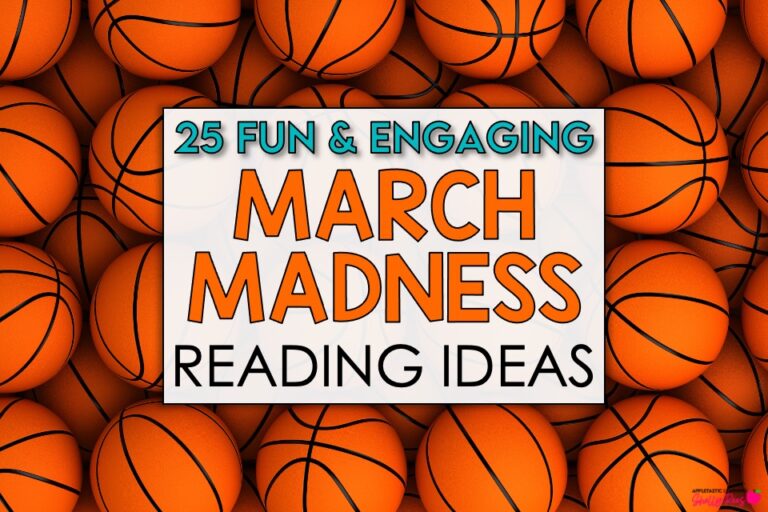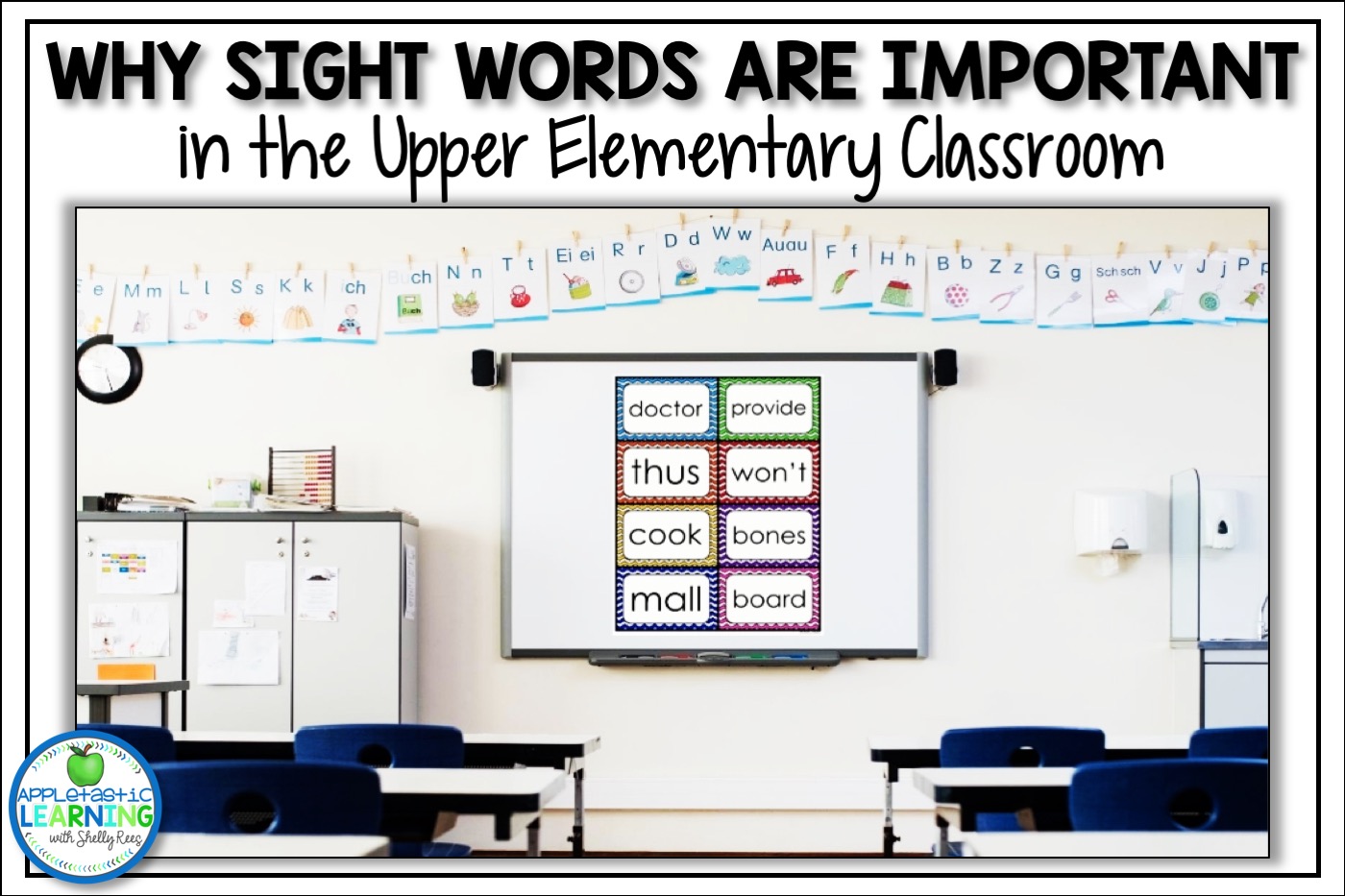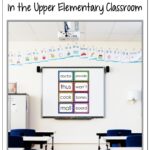

Teaching sight words is often thought of as something done in the primary grades as students are learning to read. However, they should not be overlooked in the upper elementary classroom. Here’s why sight words are important in the upper elementary classroom and some fun, easy ways to teach them.
Reading fluency is not only important to how quickly and smoothly a person can read, but it also plays a big part in  reading comprehension too. If a student is struggling to read words, the reading becomes choppy and disconnected. The mental focus switches to the individual words instead of the meaning of the words taken together. This can have a profound impact on the comprehension. Help students better their reading fluency and you will help them better their comprehension.
reading comprehension too. If a student is struggling to read words, the reading becomes choppy and disconnected. The mental focus switches to the individual words instead of the meaning of the words taken together. This can have a profound impact on the comprehension. Help students better their reading fluency and you will help them better their comprehension.
The 1,000 words on the Fry Sight Word List is comprised of the 1,000 most commonly found words in reading material at a 3rd – 9th grade reading level. These sight words are also referred to as high frequency words due to the fact that they are the most frequently used words in the English language.
If a student can read all 1,000 words on the Fry Sight Word List, then they will be about to read approximately 90% of the words in a typical book, newspaper or website. If they fluently read 90% of all the words then they are well on their way to excellent reading fluency and comprehension.
Make sight words a daily part of your reading instruction. Teach the grade level appropriate words to the class, or differentiate instruction based on the words students need to learn and teach them in small groups.
 If the words on the Fry Sight Word List make up 90% of the words students will see in print, then there’s a very good chance that these same words will make up 90% or more of the words students use in their writing. If students can learn to not only read, but also spell these words, there will be a substantial increase in their overall spelling skills.
If the words on the Fry Sight Word List make up 90% of the words students will see in print, then there’s a very good chance that these same words will make up 90% or more of the words students use in their writing. If students can learn to not only read, but also spell these words, there will be a substantial increase in their overall spelling skills.
Make sight words part of your weekly spelling list. Sight words don’t have to make up the entire spelling list, although they could. But by adding 2-5 sight words to each week’s spelling list students will be mastering the spelling of the most commonly used words in the English language. This will help their writing and reading skills.
The 1,000 words on the Fry Sight Word List are comprised of words from all different parts of speech. Knowing the meaning of these words and how to properly use them will help students in both reading and writing. If students are able to fluently read and understand these words, then they are better able to use context clues and inferencing to focus on the words they do not know.
Similarly, knowing the meaning of these words allows students to use them in their writing to better express their thoughts and ideas. As students are learning to form more complex sentences, sight words and high frequency words will play a big part in the developmental process.
It’s important for students to not only be exposed to the sight words and high frequency words, but to also have learning tools in place for using them. These sight word cards are a versatile tool that can be used in a variety of ways to support sight word instruction.
Introducing new sight words or practicing sight words does not have to take a long time. In fact, it can be done in just a couple minutes a day.
These cards are the perfect size for adding to your classroom word wall. Have these words displayed on the word wall gives students a classroom tool they can use as needed. You can also give copies of the cards to your students and allow them to create a personal sight word dictionary in a notebook. This creates a personal learning tool they can use any time they need help spelling a word or determining its meaning.
These sight word cards are great for using in classroom games too. Simply add these cards to any game and students can practice reading, spelling, or defining the words. You choose the focus based on what students are learning or where they need additional practice. This also makes an easy way to differentiate a game for students at different reading levels.
Display the cards for the words the class is working on. Encourage students to hunt for these words in books, the newspaper or other places they find written words. As students find the words in use, have them take a picture of the word or make a copy. Display the word card with pictures of the words in context on a bulletin board. Not only will this help reinforce the learning of the words, but this will help students connect their learning to their everyday lives.
Project sight word cards that the class is learning or has previously learned. Challenge the class to write a story using all of the words that are listed. This is a great way to informally assess a students knowledge of the word and its meaning. Students can write about any topic but must find a way to weave these words into their story. Not only do students like the challenge of including the words, but it is a great way to practice using the spelling and vocabulary aspects in a real world application.
Just pin this to your favorite classroom Pinterest board so you can come back for these easy to use sight word activities.

Hi, I’m Shelly! Thank you for being here. I love helping third, fourth, and fifth grade teachers with fun and engaging activities that require no to little prep! Let me help you by taking some of the stress and work off your plate.

©2022 Shelly Rees. All Rights Reserved.
